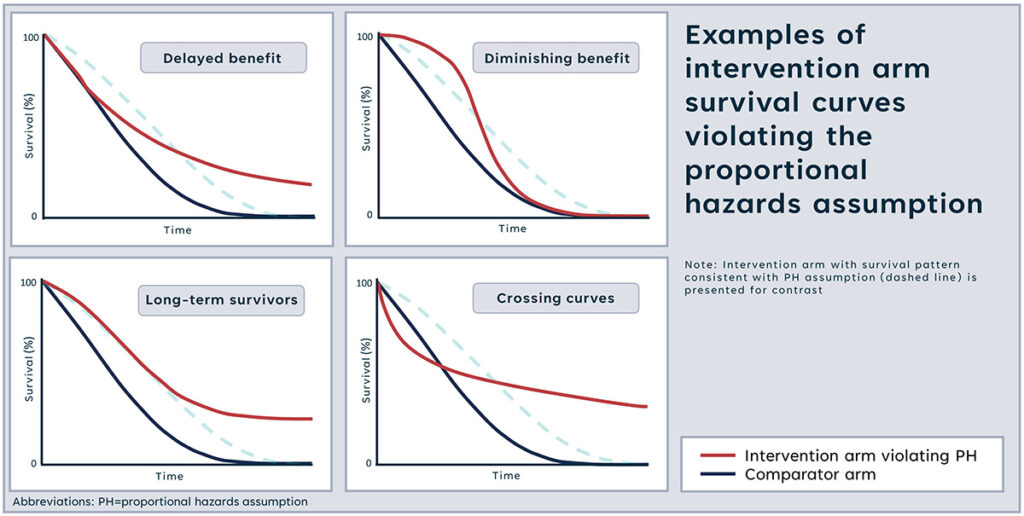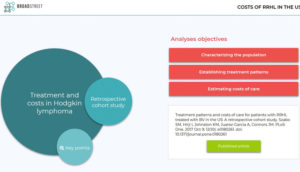In the conduct of network meta-analysis (NMA), guidance documents developed by the Decision Support Unit (DSU) for the National Institute for Health and Care Excellence (NICE) have been widely adopted. Such documents provide valuable research in promoting consistency and good practice in an increasingly widely applied statistical methodology. However, the available guidance is not “one size fits all” and there are instances in which more novel and complex statistical methods should be implemented to address nuances of the evidence base. For example, fractional polynomial network meta-analysis which helps address violations of the proportional hazards assumption in network meta-analysis of time-to-event data.
To explore this further, we thought it would be useful to discuss some recent work done by Broadstreet to help with some challenges posed by the advent of immunotherapies in oncology in recent years. These therapies have different mechanisms of action and temporal dynamics than those of standard chemotherapies. More specifically, patients receiving immunotherapy-based regimens may take longer to respond to their therapy than those receiving chemotherapy, but their response may be sustained for longer relative to patients receiving a chemotherapy regimen. Overall survival may also be sustained for longer with immunotherapy-based regimens, even among patients that have experienced disease progression, relative to patients receiving chemotherapy.

As a result, methodological challenges have emerged in the conduct of network meta-analysis of time-to-event endpoints. This is because in standard Bayesian network meta-analysis, the relative risk of an event occurring (e.g. disease progression or mortality), as measured by a hazard ratio, is assumed to remain constant. However, network meta-analyses focusing on the comparison of immunotherapy-based therapies to chemotherapies often violate this assumption as the hazard ratio tends to change over time.
The aim of the study we conducted was to quantify the long-term comparative efficacy and safety of the immunotherapy drugs nivolumab in combination with ipilimumab relative to other immunotherapy-based regimens and chemotherapy in patients receiving first-line treatment for advanced non-small cell lung cancer. To address proportional hazard violations identified in the evidence base, time-varying hazard ratios for overall survival and progression-free survival were estimated using Bayesian fractional polynomial network meta-analysis. Using this statistical methodology, we were able to generate estimates of relative effect over time and were able to highlight the long-term benefit of immunotherapies relative to platinum-based chemotherapy.
Fractional polynomial network meta-analysis can be an intimidating technique due to its complexity, which may be a deterrent for its wider application. Furthermore, there may be an element of perceived subjectivity that is associated with model selection that can be a source of criticism. To mitigate these potential limitations, Broadstreet followed a published heuristic for model selection and created a tool where all considered models can be accessed and compared. These steps added transparency to the analysis and helped facilitate interpretation of the generated results.
We encourage you to read the published article to find out more about this work. In addition, through the article you can access the Broadstreet-created application which allows you to more thoroughly explore the models used in the study. It can be accessed directly here.
If you’d like to discuss how Broadstreet can help you with a challenging evidence synthesis problem, get in touch.

